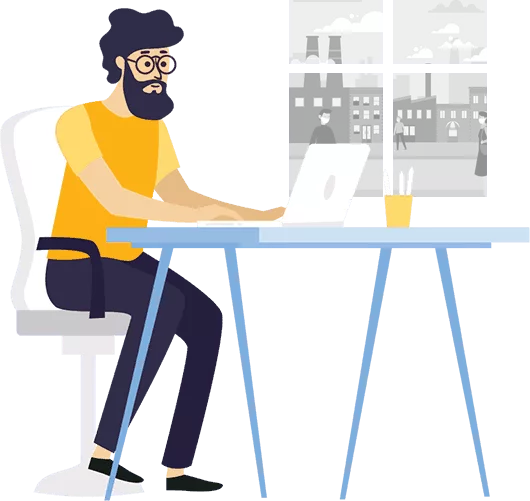Everything’s changing in 2020. According to Comscore, half the searches in 2020 will be voice search. Facebook reach, continually going down. Instagram reach, LinkedIn reaches, all starting to go down as well.
Stories, everyone’s doing stories. Going live, everyone has lived now. Hi everyone, I’m Neil Patel, and today, I’m going to break down how digital marketing will change in 2020, and what you should do.
The first trend I have for you, video reach will dramatically drop. Everyone is doing YouTube videos, Instagram videos, Snapchat videos, heck, what people are doing now is they’re shooting one video like I am, like the one you’re watching, and will cut it up into bite-size pieces, put it on LinkedIn, Instagram, Facebook, YouTube, it goes everywhere. Everyone has figured out that video is an amazing form to connect with people, which is why everyone’s doing it. So, the solution, multicast, right? Even though everyone’s doing video, that’s fine, you can’t do much about that, but what you can do is create more videos my focusing on just creating one video that works for all platforms. And when you’re doing this, you can also go live, too. So, when you’re doing the videos and you go live, you’ll also notice that you’ll get more engagement, and because you’re live, they want to push it out, complete with the TV channels, right? Facebook even has contracts with some of the sports networks, the same as the YouTubes of the world. So what they’re doing is when you go live, because they want to compete with television, they’re going to push it out to all your subscribers, everyone on their platform, and if you engage with them, you’ll get way more reach, and then when you release recorded videos that aren’t live, you’ll notice that they’ll get more love and more spread because you’ve been doing live videos at least once a month.
Trend number two, bite-sized educational interactive content is rising really fast. So, if you look at things like infographics, infographics are a really long visual where you just keep scrolling and scrolling and scrolling, and it ends up breaking down what that subject is all about. Such as, an infographic can teach you how to do SEO. But what’s working really well, and this will continue to work well in the future, is bite-size educational content. A good example of this is my Instagram page. You’ll notice that I have pictures that’ll teach you how to do things like get more traffic on YouTube or Instagram, and you just keep swiping right, and in each image, I give you a one-sentence overview of what you can do to maximize your traffic. And that example that I’m using on Instagram, works extremely well. It works so well that each of those images gets roughly 50% shares. In other words, if I get 2000 likes, I’ll get another 1000 shares from those bite-size educational informational pieces. So, copy what I’m doing on Instagram, it works that well.
The third trend I have for you, search traffic will decrease dramatically on mobile. On mobile devices these days, there’s more search snippets that are appearing and appearing. This is going to cause your mobile traffic to decrease. According to Merkle, total visits produced by organic search traffic fell 6% year-over-year in Q2 of 2019. But mobile is the one that’s getting hit the hardest, where visitor growth has dropped from 13% in Q1 of 2019, to 5% in Q2 of 2019. So, you’re just like, hey wait, my mobile traffic is going to drop, what should I do?
Well, voice traffic is increasing. So, what I want you to do is use structured markup on your site, which will help you get the rich snippets, which will help you get more voice search traffic, which will help combat the decreasing mobile organic traffic.
The fourth trend, Google will keep doing a consolidation in different markets. So, right now, Google is going head-to-head with Amazon. There’s now a Buy Now on Google button. You can buy without even going to the e-commerce site. Google’s going to be testing out more of these things to keep people on Google and making a purchase. Well don’t think of this as a bad thing; you could actually adapt to Google’s changes and generate more sales and traffic and leads. For example, with some of the programs that they’re testing out, you can actually even generate a lead on Google without driving people back to your site. Let’s say you’re in the mortgage industry. You can actually generate a lead on Google. The same goes for buying on Google with e-commerce stores. You can sell your products directly on Google without people having to go to your website, which can also increase your revenue as well. Now, this is important because according to Jumpshot, 49% of all searches performed on Google result in no click. That means if you’re not adapting to these changes, you’re not going to get as many sales or leads, so adapt with them.
Trend five, influencer marketing budgets will decrease. Right now, social engagement is continually going down. According to the analytics firm, InfluencerDB, it was revealed that influencer engagement rates are nearing all-time lows. In other words, if influencers aren’t getting as much engagement, they can’t charge as much because there’s not as much of an ROI. So, the way you want to combat this is, don’t pay influencers as much money, but find more and more influencers, and go after quantity. This will help you still generate good sales from influencer marketing.
The sixth trend, social media stories won’t be as popular and as easy to win on. See, everyone’s doing stories these days. People even unfollow stories they don’t care to engage with. So, if you want to do really well on platforms like Instagram, you’re going to have to do something called close friends, where you got to entice people to join your close friend group, in exchange for exclusive content, that way they see it, your stories go out there, and you get the engagement that you want.
Trend number seven, shoppable experiences will get more and more adaptive. For example, you can buy on Google, you can shop the Look Pins on Pinterest, and you’re going to even see things like virtual reality come into place where me and my buddies may have a virtual reality experience together where we’re like in a mall setting or store setting, and we can buy products. You’re going to start seeing more of these things come to fruition in the upcoming months and years. So, if you adapt to it, great. If you’re like, oh no, no one cares about virtual reality, I’m not going to adapt to it, well, you’re going to be passed by.




